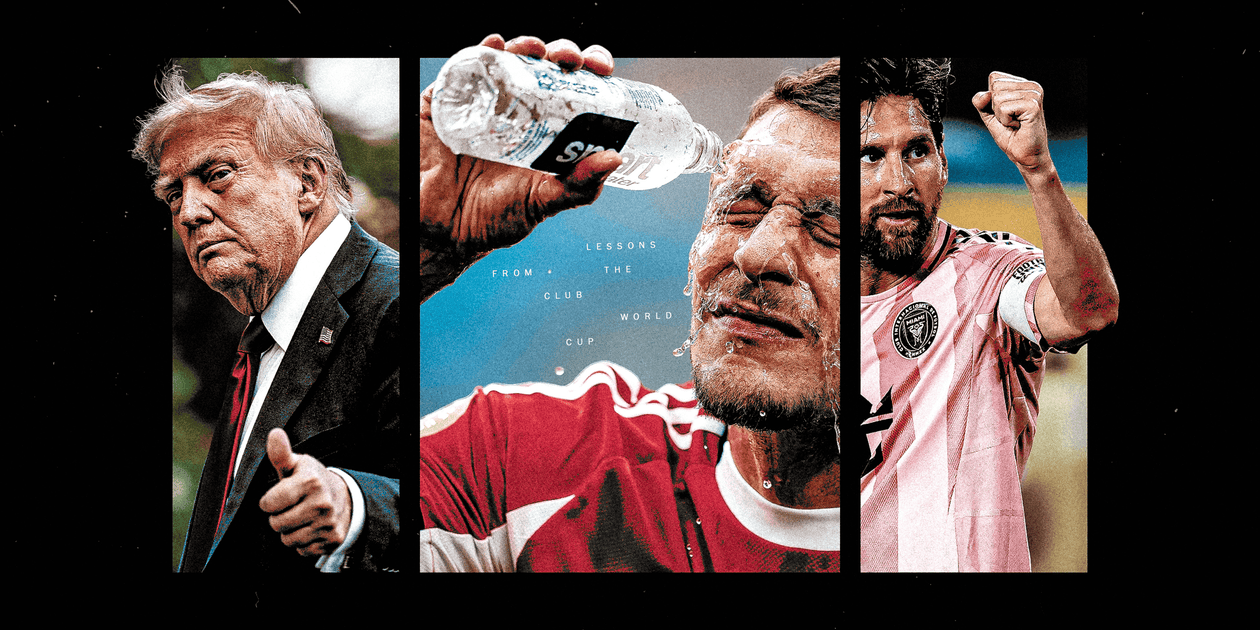At Trump Tower, the new home of FIFA in Manhattan, Gianni Infantino hailed the Club World Cup a “huge, huge, huge success” on Saturday.
The president of soccer’s world governing body later posted on Instagram that the tournament had “taken over the United States and united people in joy”.
FIFA has been on a victory lap since Chelsea’s 3-0 victory against Paris Saint-Germain in Sunday’s final in front of an 81,118 crowd at MetLife Stadium, a few miles to the west in New Jersey.
When asked, U.S. President Donald Trump referred to the popularity of the tournament, which had a total attendance of 2.49million.
It concluded with four massive matches at MetLife in its last nine days, capped by the final bringing in the highest attendance of the competition.
As for the entertainment that delayed kick-off in the final — plus the extended half-time show — The Athletic has been told the combined cost topped $10million (£7.5m). FIFA says it does not discuss specific budget line items.
“We are excited for the future,” Infantino said, adding a “big year of football awaits us in the Americas” as he promised the “biggest-ever World Cup” in 2026. That tournament will be held across the United States, Canada and Mexico but 75 per cent of the 104 matches will be played in the U.S. — including all those from the quarter-finals onwards.
Meg Kane, the World Cup host city executive in Philadelphia, told The Athletic the Club World Cup has been the “perfect ‘amuse bouche’” for next summer, when the expanded 48-team tournament — up from the 32 who qualified for the previous seven editions — will descend on North America.
Phil Murphy, the governor of New Jersey, told the Global Game summit last week the World Cup final at MetLife next July 19 will be “the most watched event in human history”, claiming the eight matches to be played at the venue, combined with the 39-day tournament overall, will drive “mid-single-digit billions of dollars” into the New York/New Jersey economy.
But what lessons have FIFA, coaches, players and fans learned from the Club World Cup that can help the World Cup run smoothly?
Boiling heat, wild storms and putting greens
One of the biggest talking points during the tournament was the weather.
A heatwave in the middle of the tournament, combined with local kick-off times at noon and 3pm (to attract prime-time European and Middle Eastern TV audiences), produced conditions that pushed players to their limits.
Real Madrid defender Trent Alexander-Arnold complained it was impossible to “think straight” and that he was “overheating” during afternoon games in Miami, Florida, and Charlotte, North Carolina, while Chelsea midfielder Enzo Fernandez called the temperatures “very dangerous”.
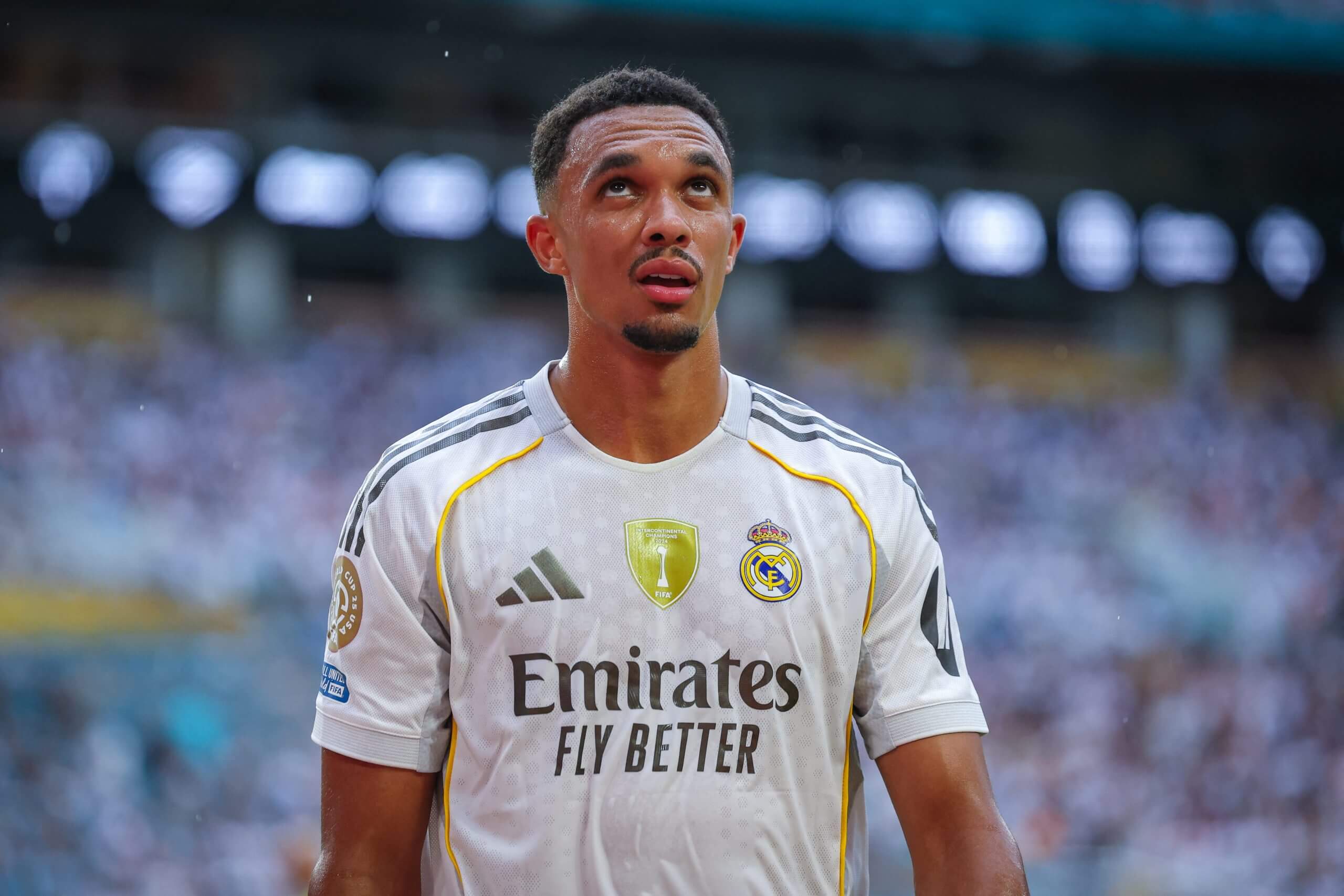
Alexander-Arnold was among those who complained about the heat (Mohamed Tageldin/Middle East Images/AFP via Getty Images)
“For the spectacle, for the people who come to enjoy the stadium, for the people who watch it at home, the game, the speed of the game, is not the same — everything becomes very slow.”
Chelsea head coach Enzo Maresca warned it was impossible to train beyond basic warm-ups on some days, while the London team deployed huge industrial fans by the side of the pitch and cooling sprays to try to mitigate the scalding temperatures. Niko Kovac, coach of German side Borussia Dortmund, said that “players should not have to work in the midday sun when it is (so hot) you should not even leave your house”.
Arsene Wenger, FIFA’s chief of global soccer development, acknowledged the heat was a “problem in some games”. He said the introduction of cooling breaks and intense pitch-watering had helped. He also pointed out next summer will see more stadiums with roofs being used — as venues in Vancouver, Los Angeles, Dallas and Houston will be included having not been part of the Club World Cup — but MetLife, which will stage the final, is not covered and there were several days of lightning storms in the area during the tournament.
Wenger also said kick-off times may be more “sensitive”. It is not clear how this can be the case as the current schedule has 15 days where four matches will take place one after another and FIFA’s usual preference would be to hold group-stage games — except in the final round, where those in the same section are played simultaneously — as standalone events, to ensure maximum value for the broadcasters. The new round-of-32 knockout stage also has five days of three fixtures per day.
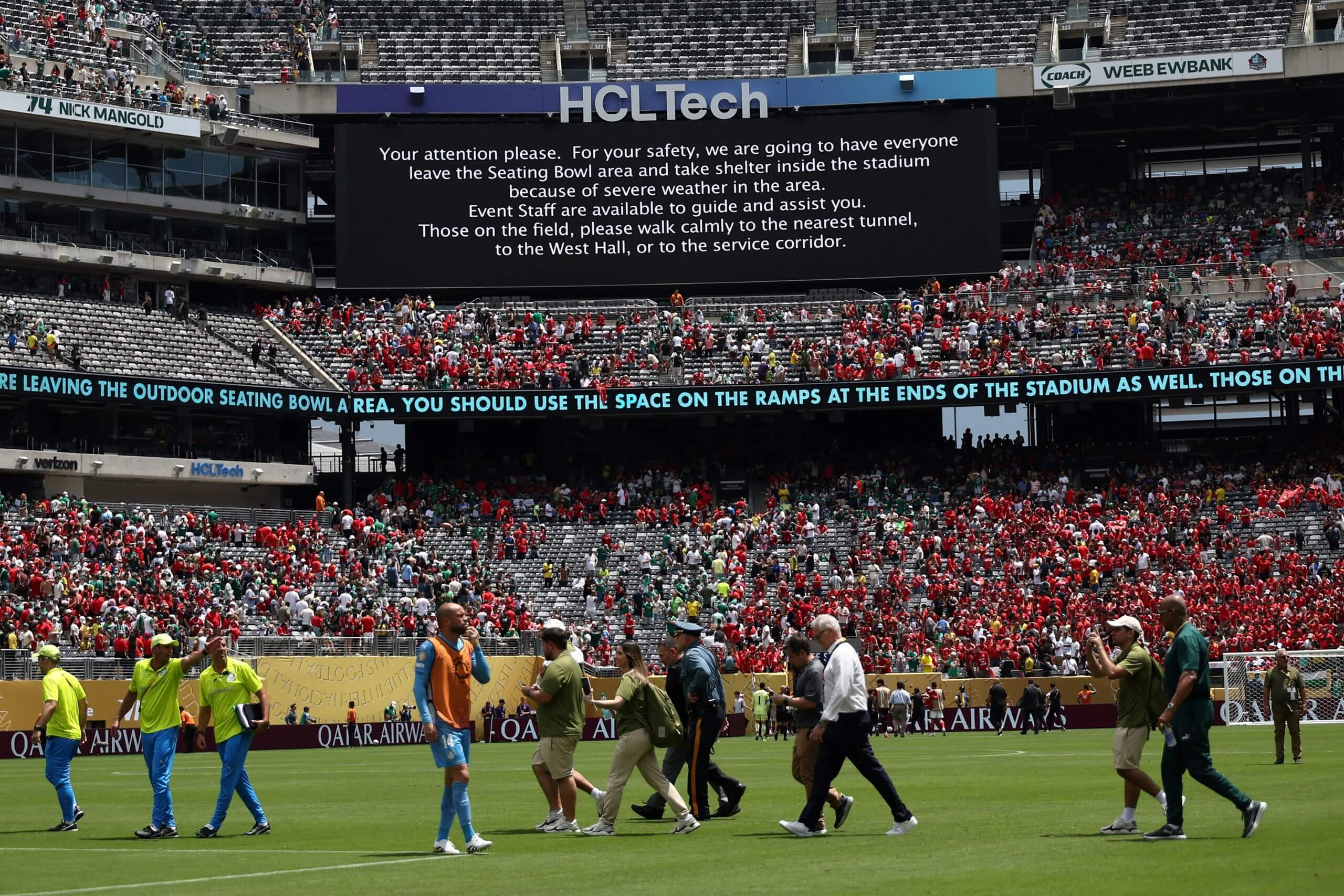
A storm alert during Palmeiras vs Al Ahly at MetLife Stadium (Franck Fife/AFP via Getty Images)
The wild swings in weather also disrupted games. Six matches were delayed, with the stoppages ranging from 30 minutes to two hours.
Chelsea’s round-of-16 match against Benfica took four hours and 38 minutes to complete, factoring in 30 minutes of extra time, in a situation Maresca described as a “joke”. The regulations mean play must be stopped if lightning is noted within a 10-mile radius of a stadium and cannot restart for 30 minutes after it has cleared. Some of FIFA’s cast of legendary former players helping promote this summer’s event have pushed the organisation to reduce that radius.
Wenger was less empathetic on the issue of the pitches, which provoked severe criticism from coaches and players at certain venues.
Kovac was among those unhappy about the field at MetLife. He said: “I can compare this pitch with two pitches (Dortmund also played on in) in Cincinnati and Atlanta. The grass quality is different from the other stadiums. You could putt here. It’s very short. This is not the (type of) grass we are used to playing in the Bundesliga.
“The watering wasn’t good enough. Overall, for high-speed football, you need the right weather conditions but also when (the pitch) is too dry … it’s unbelievable, it’s sticking. I can’t explain it. If you go out and test it, you will see.”
One coach present at the tournament also told The Athletic that they believe, at some venues, plastic underneath the temporary grass pitches laid for the Club World Cup was making the surfaces overheat, exacerbating the temperature issues.
After the final, Chelsea captain Reece James concluded: “The venue was top, the pitches not so good. Hopefully, there are some changes for the World Cup next year. The pitches, there’s artificial turf underneath and maybe grass on top (this was the case in New Jersey and at Atlanta’s Mercedes-Benz Stadium). It’s not the best for joints and for muscles.
“You will see higher-quality games and higher-quality football if we played on the surfaces that we play on in Europe.”
Influencers, Infantino and visas
In the months leading up to this tournament, Infantino claimed the Club World Cup and next year’s World Cup combined would drive $47billion to the United States’ economy.
Standing beside Trump, Infantino also said that millions of people would come to the U.S. to watch the Club World Cup — that does not appear to have transpired.
Next year, more visitors will be required if host cities are to claw back the billions of dollars of federal money — and state and city taxpayer dollars — that have been invested. Financially, tourists from other countries are worth more than domestic fans — they are more likely to book hotels, hire cars and use public transport, as well as spend money in restaurants, bars and at places of interest.
Governor Murphy said he is predicting “one to two million visitors will be in the region” of New York and New Jersey during the tournament.
Philadelphia’s Kane says FIFA provided guidelines in 2022, explaining that cities chosen to host World Cup games should prepare for 500,000 people each on average coming in.
FIFA was hoping for a 50-50 split of domestic and international travellers. Tourists are desired not just to fill stadiums but also fan festivals, which were not a feature of the Club World Cup, underlining how events were largely confined to venues. Murphy says the Liberty Park fan fest in his state will accommodate 45,000 people.
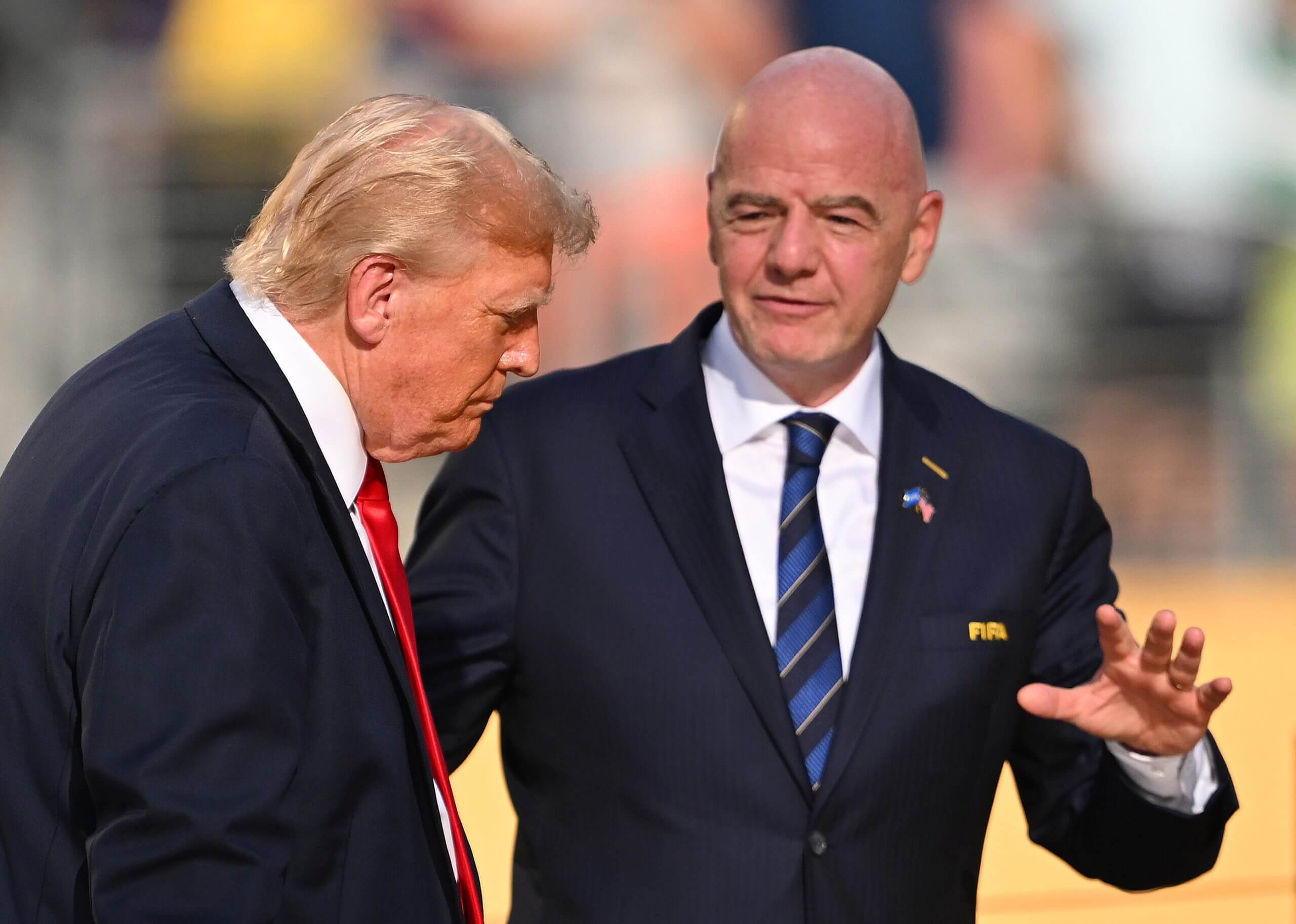
Infantino said millions of people would visit for the Club World Cup (David Ramos/Getty Images)
It remains to be seen how Trump’s trade wars, tariffs and attitude towards immigration may impact foreign visitors. However, in an interview with The Athletic last month, Republican Congressman Darin LaHood of Illinois said: “I just saw some data that showed tourism from Canada to the United States is down 40 per cent.
“We’ve seen in several tourist destinations in the United States this year that tourism is down: in Las Vegas, New York and Florida.”
U.S. Customs and Border Protection (CBP) data from the 16 largest international airports across the World Cup’s three host nations (air travel only) indicated inbound visits to the U.S. were down 4.7 per cent in May 2025 versus May 2024.
The hope of FIFA and the host cities is that the World Cup will have a longer runway to both sell tickets and market the competition. The Club World Cup did not have venues tied up until September, a broadcaster until December and sponsors were still coming onboard after the event began.
Hospitality packages are already on sale for the World Cup, while public awareness of it is much greater than for the Club World Cup.
The group-stage draw will take place in early December, with Las Vegas the likely venue, and FIFA will be keen to make it a national event. Despite a video message from Trump and the presence of his daughter Ivanka at the Club World Cup’s group draw last December, there was little cut through.
In the months leading up to the tournament, FIFA spent more than $50million on marketing the Club World Cup, including a large investment on social media influencers and commercials. Infantino’s pre-competition tour of American cities and an interview with iShowSpeed failed to capture the imagination.
Gianni Infantino let streamer iShowSpeed replace him as FIFA President for a minute during the Club World Cup 👀 pic.twitter.com/plqB3RFmeK
— Football on TNT Sports (@footballontnt) June 15, 2025
More emphasis is expected to be placed on targeting local radio and television stations, which still have large audiences in the U.S., while the turnout from diaspora communities for South American and Middle Eastern teams is also likely to be a target for FIFA over the next year.
Kane says of a possible World Cup draw in Vegas that she can “only imagine how sexy it might be”, adding: “It has the opportunity to engage Americans in a unique way; an enormous opportunity to turbocharge excitement. It is always hard to do a major event within the context of an NFL season (from September to February). But FIFA has a grand opportunity to be creative and to have fun with it and to bring the fans in and maybe let it be a little loose, a little crazy. Let people feel the energy.
“ If there’s any lesson from the Club World Cup, it is that fans win the day. So lean into that.”
There remains, however, a challenge to process fans in time for the tournament’s start next June. Many will not book or buy tickets until they learn, via December’s draw, where their country will be playing in the group stage.
That presents challenges for Colombians, for example, where the average wait time for a U.S. tourist visa appointment is 15 months and Ecuadoreans, where it is 10 months, or Costa Ricans, who must wait nine and a half months.
Multiple sources within the U.S. Department of State have previously warned The Athletic that there are also concerns a “non-insignificant” number of people who legitimately acquire tickets for the tournament could be refused visas. This is because the stringent vetting process for entry means possession of a World Cup ticket does not guarantee entry into the country. Potential visitors must prove continuing ties with their home nation and convince consular officers they do not intend to overstay their tourist visa.
Some countries, including Iran, are also on a travel ban list imposed by the Trump administration, potentially denying their fans the chance to travel for the tournament. There are exemptions for the teams and federation officials.
At FIFA’s congress in May, Infantino said everyone would be welcome in America: “Of course, the players, of course, everyone involved, all of us, but definitely also all the fans.”
Within a couple of weeks, the administration had implemented the travel bans.
Dynamic pricing and empty seats
FIFA adopted a dynamic pricing approach to tickets, where prices fluctuate according to supply and demand.
For high-interest sports and music events, this can lead to prices skyrocketing in value but during the Club World Cup, where not a single game was a complete sellout, these costs often tumbled instead due to a lack of demand.
FIFA’s early pricing was not well received by the U.S. market, with the cheapest seat for the tournament opener between Al Ahly and Inter Miami at Miami’s Hard Rock Stadium being priced at $349 following the group-stage draw in December. Prices dropped to $55 in the week before the tournament began, and FIFA even offered five tickets in return for buying one $20 ticket to students at Miami-Dade College (a network of more than 100,000 people).
Similar deals emerged with different universities during the tournament as FIFA scrambled to avoid tens of thousands of empty seats becoming a regular occurrence. The group-stage games recorded an average of 35,000 spectators, but the size of the venues chosen — largely NFL stadiums with capacities of more than 60,000 — left big gaps in the stands.
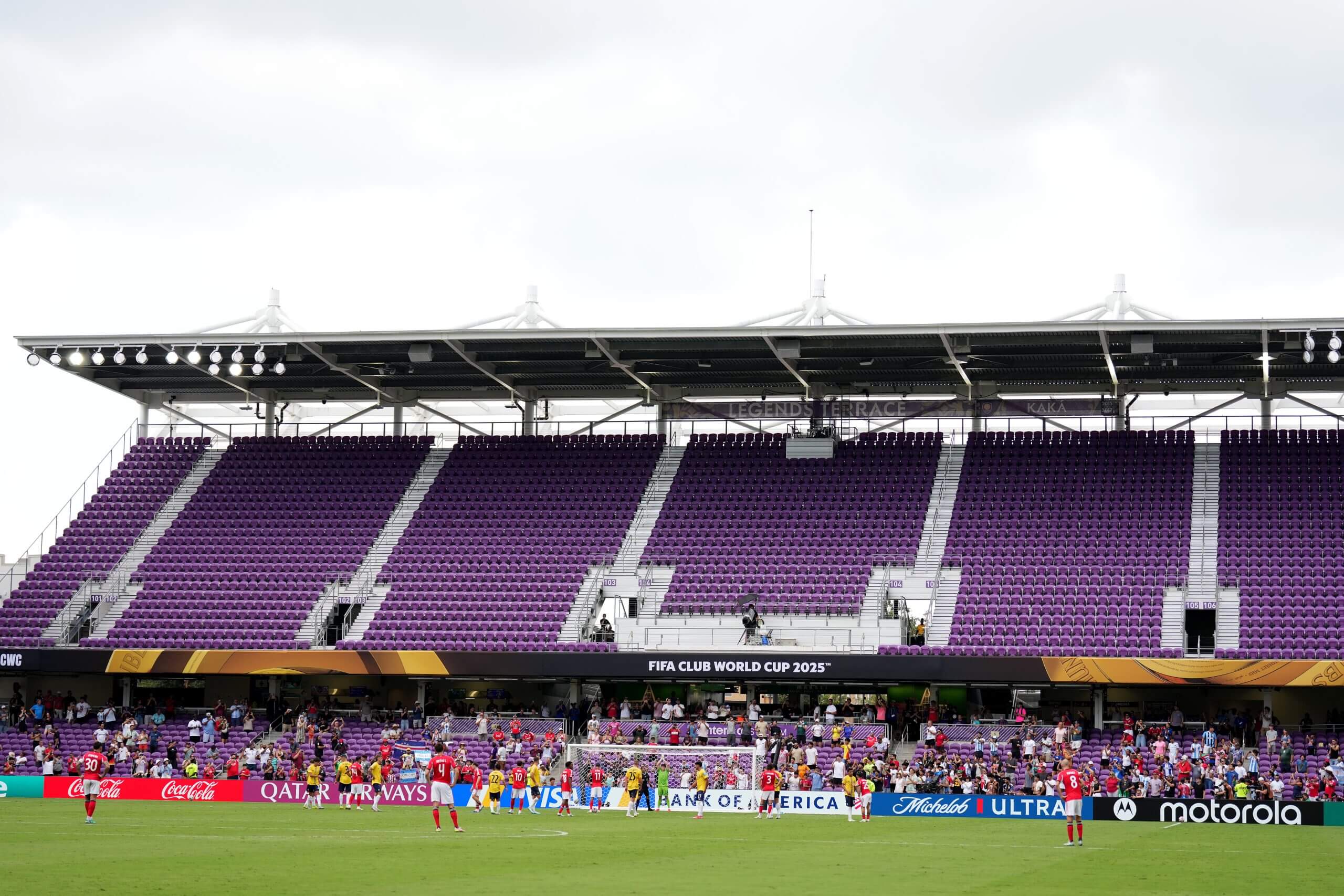
Empty seats were an issue at Club World Cup games (Michael Owens/Getty Images)
The dynamic-pricing market made for some absurd fluctuations.
Standard admission pricing for the semi-final between Chelsea and Brazil’s Fluminense at MetLife was reduced to just $13.40 on the weekend before last Tuesday’s match, having been priced at $473.90 less than 72 hours earlier. That meant it could be cheaper to buy a ticket to the game than to buy a cheesesteak ($15) or a beer ($14) once you were inside the stadium.
FIFA’s volunteers for the tournaments also received emails offering them four complimentary tickets to all four quarter-finals, except for Real Madrid’s fixture against Dortmund, as FIFA sought to fill the stadiums. Volunteers appreciated the offer but it had not been planned. Prices for the quarter-finals dropped to $11 for the two games involving Brazilian teams and to $44 for PSG’s win against Bayern Munich, contributing to a surge in the size of that crowd.
Even prices for the final veered wildly. On July 2, the cheapest standard-admission ticket available was priced at $892, but by Sunday, the day of the game, they were available for $199. The final was not a sell-out but attracted more than 80,000 spectators, while 16 of the 63 games had crowds of over 60,000.
FIFA deserves credit for actively responding and improving access to its games, but the need to do so represented a failure to understand the market after setting original prices too high.
Philadelphia’s Kane, whose committee was not involved in organising the Club World Cup despite their city hosting eight matches, told The Athletic at the end of the group stage: “The lack of understanding around the tournament itself, coupled probably with the original pricing, potentially quelled some enthusiasm and sales, from anecdotes I’ve heard.
“When we ran a community day, we could give out tickets to youth soccer clubs for Juventus against Al Wydad. This included a family special, where you bought one ticket, and got two tickets free for kids under the age of 16. What was so amazing was the feedback — people who had never been to a soccer match before, who were absolutely blown away.
“We’ve learned a lot of lessons about how to get people into this. That’s also why I think the fan festivals will be a huge part of the experience next summer.
“When we’ve provided FIFA with suggestions or outlets around how to promote tickets in a certain way, they are very amenable. Part of the work of this fall is to work with them on how we can be very supportive; to have those channels lined up, so if you want to turn them on, we can turn them on earlier.”
FIFA is still intending to implement dynamic pricing next summer for standard-admission tickets and it remains to be seen whether those costs will reflect the challenges faced during the Club World Cup over the past month, or whether Infantino and the other decision-makers take the view that the World Cup is a premium product and worthy of sky-high demand.
The sport’s global governing body has projected $13billion in revenues for the four-year cycle ending with the 2026 World Cup, so don’t expect prices to start low.
Walk-ons, half-time shows and President Trump
The Club World Cup’s final came with all the bells and whistles we might expect from a big sporting event in the United States, but such razzmatazz feels new to many European football fans.
FIFA introduced NBA-style individual walk-ons for players before the game. This led to several games starting late (NBA teams have five players in their starting line-ups, not 11), while some players complained the delays disturbed their optimum physical preparation.
Some liked it, though.
“It’s something special and new for us,” Chelsea midfielder Romeo Lavia told reporters. “It’s a first for us. I enjoyed it. Why not bring it to the Prem (Premier League)? The only difference is (if we did it in the Premier League), we might get a bit cold because once you’re out there, you have to wait for maybe the other players. But apart from that, it was good.”
His team-mate Levi Colwill said: “It was something different, something new. When you come to America, you expect these things and it’s a good experience.”
Martin Anselmi, Porto’s head coach at the tournament, said: “It’s a bit slow. I find it a bit strange. It seems like putting on a show for the sake of it. It seems a bit pointless.”
Famed American boxing announcer Michael Buffer also boomed out his catchphrase, “Let’s get ready to rumble!” before the final kicked off. The pre-game love letter to America also included the singing of the national anthem, pyrotechnics and a military flyover.
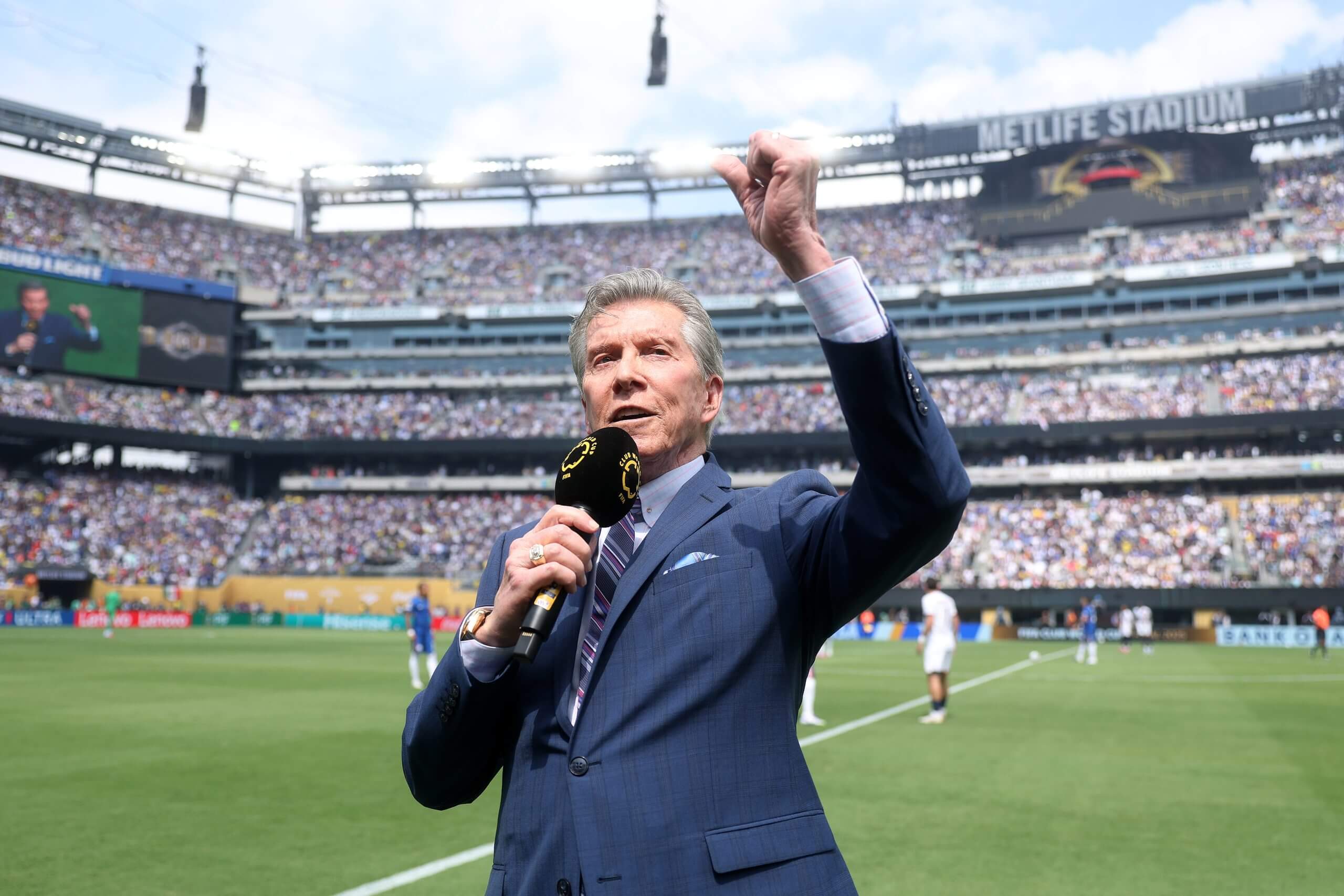
Announcer Michael Buffer (Michael Regan/FIFA via Getty Images)
The final started seven minutes later than scheduled, such was the pomp and ceremony, including a performance by FIFA music ambassador Robbie Williams.
The Athletic has been told the combined cost of that opening show and the one at half-time — which featured Chris Martin, Doja Cat, Tems and J Balvin performing on a stage built in the upper tier of the stadium — ran substantially beyond $10million.
The biggest takeaway from the final, beyond the sport, was the dominant role played by Trump.
He watched the full game, mingled with executives from FIFA, and the two clubs and was present for the pre-match national anthem and took part in the post-match medal and trophy presentations. He even did an interview with the tournament’s host broadcaster, DAZN, talking about the growth of soccer in the United States.
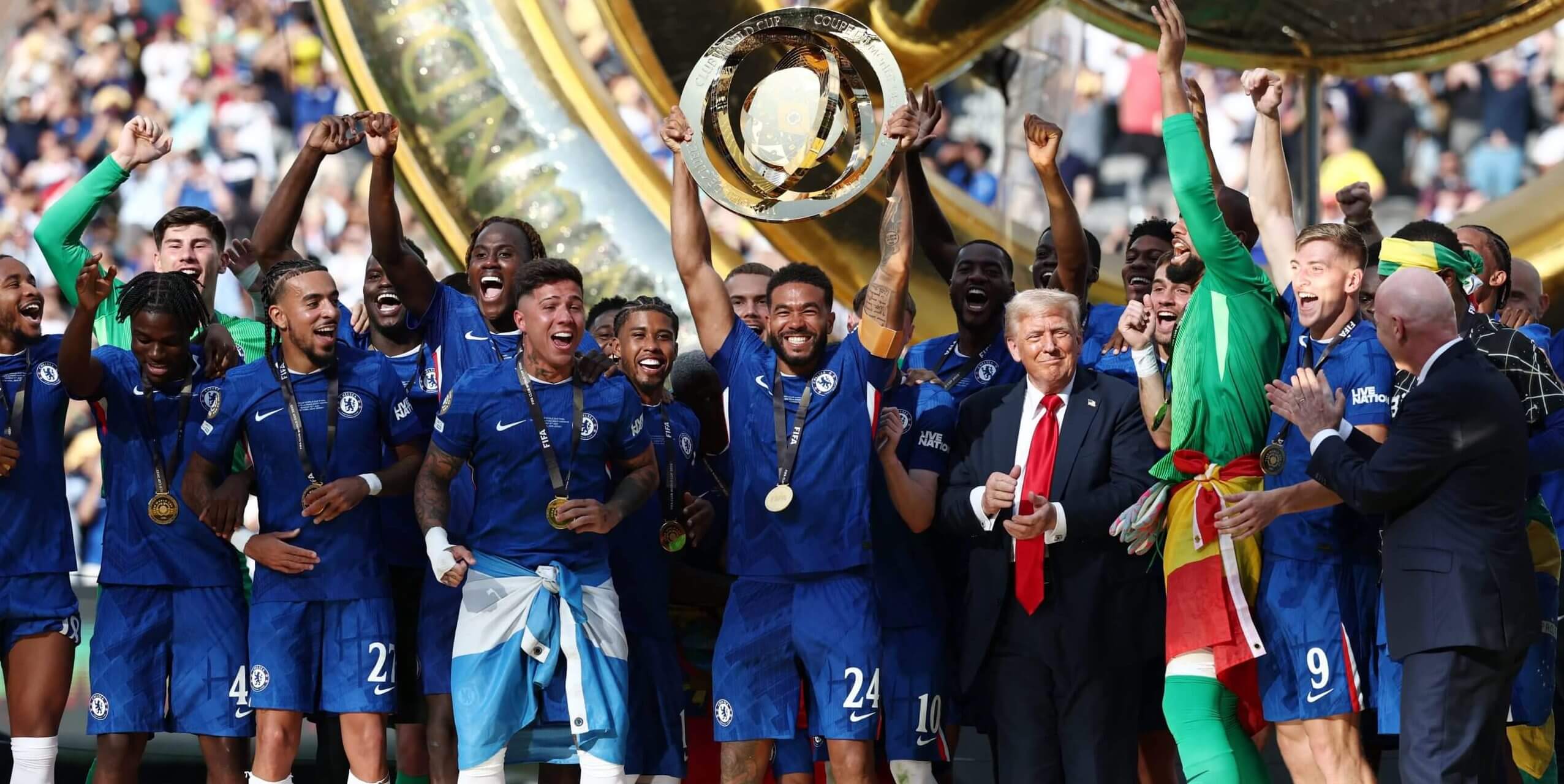
President Trump soaks in the trophy celebrations (Franck Fife/AFP via Getty Images)
Infantino has courted the president, attending his pre-inauguration rally and January’s inauguration and spending time with him at his Florida home, Mar-A-Lago. This despite Trump’s trade wars with co-hosts Canada and Mexico, as well as his suggestions that Canada should become part of the U.S. and his attempts to rename the Gulf of Mexico the Gulf of America.
Trump has recently launched a White House Task Force to work on the World Cup, chaired by himself and vice-chaired by his vice president, J.D. Vance.
His recent domestic policy bill approved $625million worth of funding for World Cup host cities to spend on security and other costs for the tournament, underlining once again how he appears to believe in the merits of hosting the tournament.
The bromance with Infantino shows no sign of letting up, with FIFA last week taking office space in Trump Tower.
By now, it would be no surprise to see the president front and centre during the World Cup’s group draw at the end of the year and at various stages as the games are played in June and July.
(Photos: Getty Images; design: Will Tullos)

